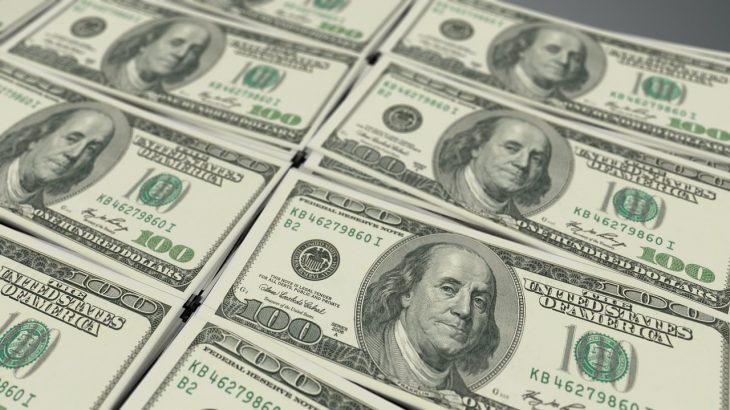It’s that time of year again – tax time. For some, it represents a time of confusion and stress as they attempt to navigate new tax codes, statements, and meeting the tax deadline. However, for most tax season also represents an opportunity in the form of a tax refund.
In 2016 the IRS reports that tax refunds were distributed to a little over 80% of Americans, with the average refund being $3,050. Families with dependents averaged just north of $5,000. Either way, that’s a pretty good chunk of money.
So How do Americans Spend Their Tax Refund
Most surveys indicate the top four things people do with their refund are:
- Pay bills. Most view it as an opportunity to pay down credit card bills from the previous Christmas holiday or pay down other forms of debt.
- Make a large purchase. A down payment on a car, a home, or that long-awaited vacation.
- Save. Some view it as an opportunity to put a little more cash in the bank, to grow their savings account.
- Splurge. Spend that tax refund to buy something they have wanted in the last year, but have been unable to afford.
Regardless of what you may do with your tax refund, most approach getting their refund as a current, or one-time event.
But what if you could use that refund to change your financial picture? Not just this year, but for the rest of your life.
How to View Your Tax Refund as a Personal Finance Strategy
Sound boring?
Well…if you think of using your tax refund on a one-time purchase, it sure is. But consider this.
If you received a tax refund this year, and assuming your financial picture doesn’t change drastically over the next year, you will probably receive another refund in the following year, and the year after that.
Over the course of three years, with an average refund of $3,050, that means if you save every penny you can bank $9,150. That’s significant money! Enough to pay off a whole bunch of debt, buy a great used car with cash, or invest it in an IRA or mutual fund.
Related Post:
- Lower Your Taxes and Start Investing by Opening a Traditional IRA Account For Retirement
- The Real Reason You Should Prepare Your Own Taxes
- How to Start Investing in Mutual Funds
- Saving Cash, Paying Off Debt & Staying Motivated
- A Different Way to Reach Your Financial Goals – The Tiny Tweaks Principle
- 10 Successful Money Management Tips to Live By – from a 52 Year Old
- The Art of Being a Cheapskate – How I Successfully Manage My Budget
Everyone’s situation is different, and of course, everyone has a different perspective on money. However, if you’re in debt and looking to get out of debt, leveraging your tax refund as a strategy could be a tipping point.
A strategy that not only benefits you today but changes your financial picture in the future.
Consider the FTP 60/30/10 Rule
The 60/30/10 rule is designed to help change your financial picture by using your tax refund to jump-start your path to debt free living. The rule focuses on changing your behaviors surrounding how you think about your refund – from the perspective of long-term versus short-term money. Here is how it works.
Let’s assume your tax refund is $3,120.
60% – $1,830 of the refund is allocated to your savings account. Why? If you’re carrying debt and have limited cash reserves, then the single greatest threat to you getting out of debt is the next emergency. $1,830 will provide an immediate emergency fund so your next emergency can be paid with cash – versus a credit card or loan.
Already have an emergency fund? Consider taking a portion of your tax refund and investing it. Wealthsimple is a great option for individuals who want to get started. No minimums, automated and simple to use, and they provide great personal service.
If you’re not familiar with establishing an emergency fund and why it’s important, read my previous post Break the Debt Cycle, Establish an Emergency Fund – The Cash Ladder
30% – $915 to make an additional payment or pay off debt. This assumes you are already making at least the minimum payment on your debt balances (you’re not behind on payments) and will leverage the additional $915 to expedite the payoff of the lowest debt balance (i.e. making more than the minimum payment). If you are using the Snowball method for debt reduction as recommended by FTP, allocate this portion toward the lowest debt balance.
Related Post:
10% – $305. In my eBook 4 Steps, I discuss the emotional and behavioral aspects of money. Often, the emotional and behavioral aspects of money put us in debt or keep us there. In this situation use the $305 to treat yourself to, family dinner out, an adventure with the kids, or maybe it’s some new clothes for yourself.
Why? Because making the decision to leverage your tax refund as a strategy (60/30/10) versus a one-time event is a major change in behavior. You should feel good that the decision you made furthers your efforts to both eliminate debt and save money – to change your financial picture forever.
Think Tax Refund, Think Long-Term
One of the most challenging aspects of paying off debt, or saving money is thinking short term – we want immediate results like there is no tomorrow. However, tomorrow does come – and go, and before you know it next year becomes this year, and you are receiving your next tax refund.
Viewing your tax refund as a long-term strategy to improve your financial picture means you’re not just thinking about today, but the benefits of future refunds and how they can help jump-start your financial goals.
Recommended Resources:
- Turbo Tax – Tax Software, easy to use and will maximize your tax refund
- H&R Block Tax Software
- TaxAct Tax Software
- Financial Calculators
- Wealthsimple – Socially Responsible Automated Investing $0 Account Minimum
What Do You Do with Your Tax Refund?, Feel free to comment below.



